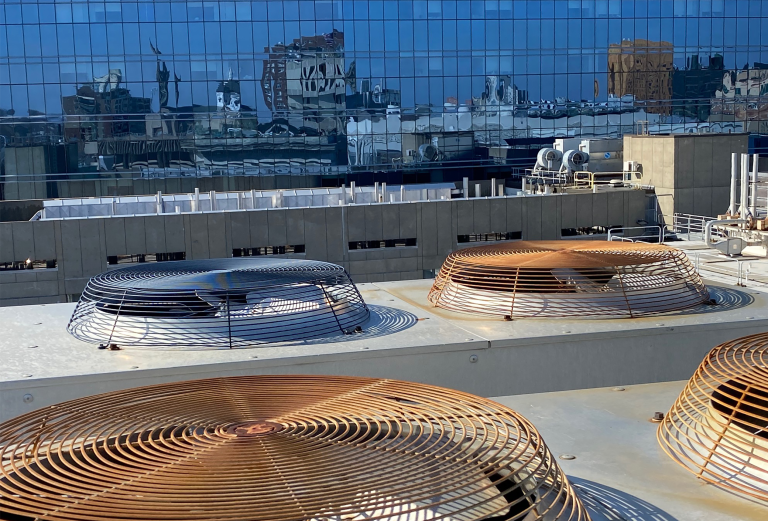
Large condenser fans ensure steady temperatures in rooms that house heat-generating equipment, such as computer servers. The fans draw the warm inside air over a network of copper piping through which flows a water-glycol mixture that cools the air. If outside temperatures make the liquid too cold, sensors trigger the fans to shut off so the heated air may passively escape. The system functions like a compressor for a residential air-conditioning unit.
The sleek, solid structures crouched around the HMS Quadrangle may be considered by some to represent the School’s imposing community of investigators. For others, numbers may serve to describe the sweep of biomedical inquiry on campus: $317 million in research grants and contracts revenue in FY23 supporting the work of 193 faculty and 669 research fellows and postdocs.
There is, however, another indicator of the School’s intellectual activity: the vast infrastructure of ducts, fans, sensors, and systems that regulate the environments of the research buildings, keeping conditions safe and holding them steady for researcher and research alike.
The images in this photo essay bring that infrastructure to the fore. They expose, even celebrate, the intricate rooftop mechanisms that ceaselessly circulate the air and fluids critical to maintaining conditions that support the lifeblood of the scientific enterprise at HMS.
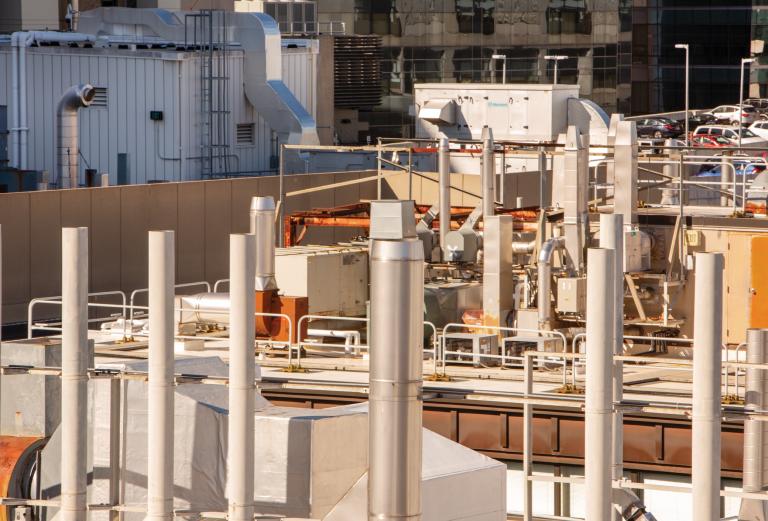
The tall stacks in the above photo send air from laboratory fume hoods to heights where it can dissipate quickly and safely. The height of the stacks also keeps vented air away from personnel working on rooftop systems. Other rooftop units remove moisture from air flowing into lab areas that require low humidity.
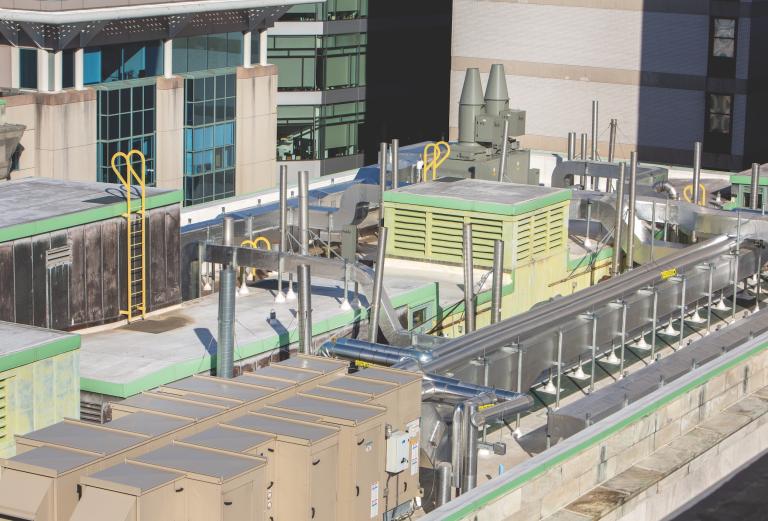
Equipment atop the building in the above image shows a good deal of bright ductwork connected to large air-handling units in the lower left. These units pull in outdoor air to allow for the six complete air changes per hour required for laboratory spaces. The cone-shaped tops of the khaki-colored stacks in the center of the photo can hurl air even higher than the stacks shown on previous pages. For any given building, the height that vented air must reach is carefully calculated by engineers who know the environmental and safety specifications for tightly built areas such as HMS.
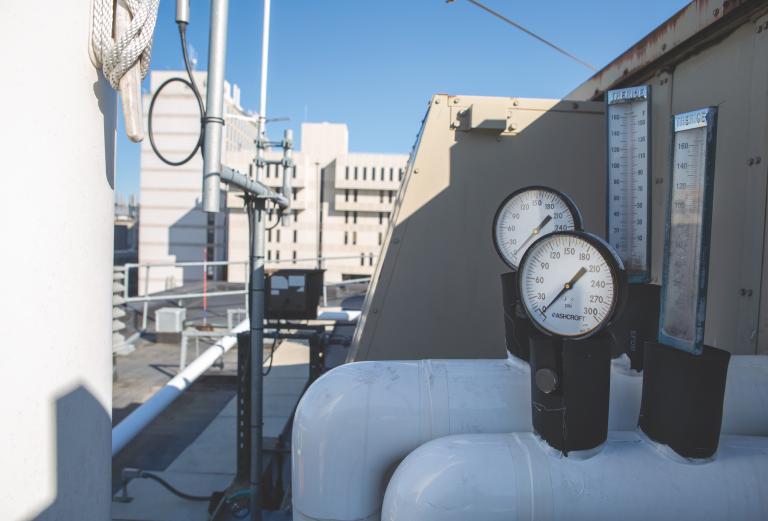
Rooftop temperature and pressure gauges, above, are off much of the time. The physical properties they measure can be monitored by remote sensors linked to laptops. If a worker is on the roof without a monitoring device, the gauges can be activated and measurements taken.
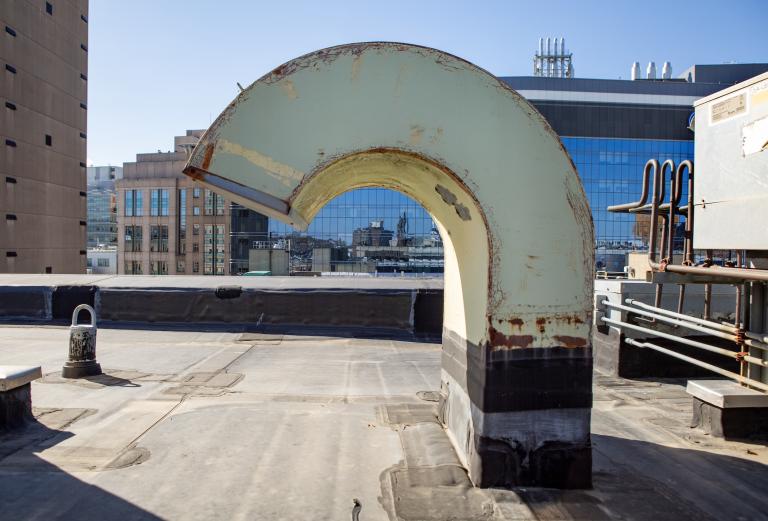
Building laboratory spaces for new faculty and changing existing research spaces means modifying exhaust and supply airflow requirements. Sometimes equipment is added to accommodate these needs, and sometimes existing equipment is put out of service. The photo above shows a vent that has been capped and rendered inactive. It may have been kept in place because its ductwork runs through several floors, making it costly to extract, or as a hedge for future changes that would benefit from linking with an existing system.
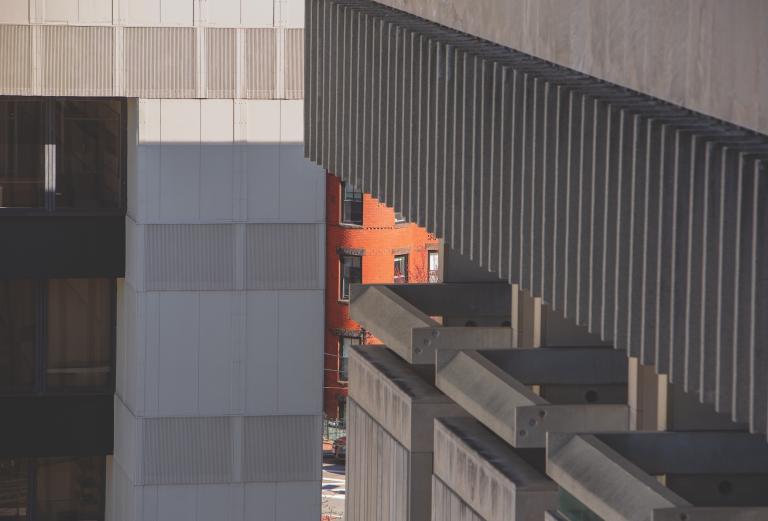
The architectural collage above captures older and newer buildings’ profiles and color palettes. Just as the older and newer mix of equipment on the roofs of Quadrangle buildings can be remade to meet the changing needs of the research community, these structures can be modified to allow for the evolving needs of the HMS academic and administrative communities.
Images by John Soares